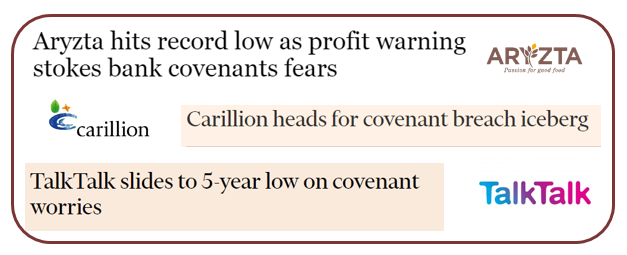Debt Finance & Loan Covenants

For any company borrowing money, the issues of the amount to be borrowed, the interest rate charged, and the term of the loan are typically the first things to be focused on when negotiating a lending agreement. However, another key aspect of any such agreement between a lender and a company will be the covenants attaching to the loan.
This was the topic of focus for IAASA in their most recent report examining the disclosure of loan covenants in Irish Plc annual accounts with a focus on whether companies are giving users enough information to assess credit and liquidity risk.
What are loan covenants?
In simple terms, loan covenants (also known as bank covenants or financial covenants) are restrictions imposed by the bank to limit their risk exposure on the loan. The bank will be worried that a company could end up taking on more debt, paying out a lot of dividends to shareholders, or undertaking other risky strategies (e.g. large M&A activity) that can increase the chances of the bank not getting paid its money back in full.
These covenants then are seen as a mechanism for aligning the interests of the company and the bank – similar to the issue of principal-agent theory in terms of management and shareholders. Imposing such covenants (or conditions) as part of the loan can reduce the risk for the bank and may thus also reduce the cost of finance (in terms of interest rates charged) for the company also.
What are the types of covenants?
There are a variety of types of covenants that can be used by banks but broadly they can be split into three separate groups; positive, negative, and financial.
1. Positive
Positive covenants involve things that the borrower must do as part of the lending agreement. Such covenants could include;
- Provide annual audited financial statements
- Provide monthly unaudited accounts
- Ensure the business remains tax compliant
2. Negative
Negative covenants involve things that the borrower must not do as part of the lending agreement. Such covenants could include;
- Do not sell certain assets without the bank’s permission
- Do not take on additional debt without the bank’s permission
- Do not payout dividends (or over a certain amount of dividends) without the bank’s permission
- Do not enter into certain types of leases and/or guarantee agreements
- Do not engage in any mergers or acquisitions without the bank’s permission
3. Financial
Financial covenants are based on ratios calculated from the financial statements of the borrower. Note that the financial ratios could also be classified as positive or negative covenants depending on how they are set up (e.g. you should keep above a certain ratio or you must not go below a certain ratio).
Examples of such financial covenants include;
- Interest cover ratio (usually using EBITDA for a profit figure)
- Debt/EBITDA
- Gearing ratio
- Minimum cash balance
- Minimum shareholders’ equity
For example, the loan agreement might provide for a minimum interest cover ratio of 4 times. If the accounts show it falling below this at any stage, then the covenant is deemed to be breached. In the context of Debt/EBITDA or a gearing ratio it would be a maximum ratio that would be set.
What happens if they are breached?
The bank will monitor the covenants on a regular basis and a breach can have a variety of consequences depending on the loan agreement signed. These can include;
- Penalty fees to be paid
- Increase in interest rate and/or security to be provide
- Full immediate repayment of the loan (“calling” of the loan)
- Restriction on the release of new funds
- Additional restrictions (e.g. capital expenditure, dividend payments)
Even if it is not an actual breach, the mere potential of one can also cause a lot of trouble for companies as various stakeholders (e.g. shareholders, banks, customers, suppliers, employees) all become concerned about the financial sustainability of the firm. See below for some recent headlines about firms and potential covenant breaches.

How are the covenants set at the outset?
Covenants will be agreed between the lender and the company at the outset of the loan and these usually form part of the funding negotiations. For the financial covenants, they are usually based on the financial projections submitted by the company to the bank/lender as part of the funding application and then the bank applies a buffer (or headroom) to the relevant forecasted ratio which then becomes the financial covenant.
For example, the company’s forecasted gearing ratio in 2019 is 50%. The bank then might (depending on negotiations) give headroom of 20% so the gearing covenant for 2019 will be 60% (50%*1.2) and if it goes above that level the company will be in breach of the covenant.
Links
IAASA – Desk-top review on companies’ bank covenants disclosures

no comments